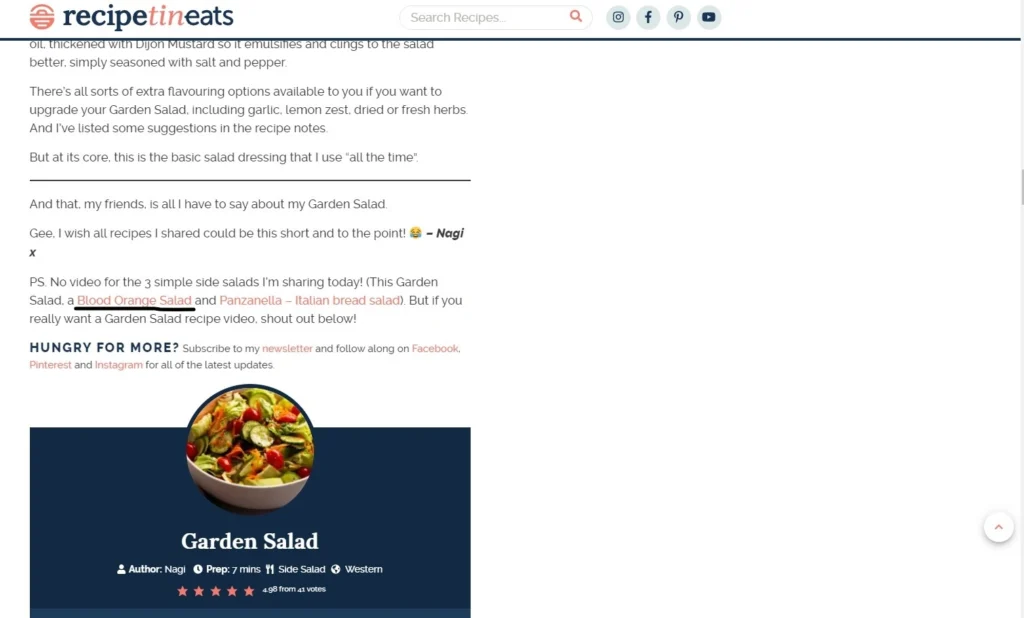
What are backlinks?
Backlinks (or inbound links) are links from other websites or external sources to our own website.
They are important as they are one of the ways in which search engines understand which websites are of higher quality, since they get links from other equally important sources.
Let me start by breaking down the different types of backlinks…
Distinguishing Between Backlinks and External Links
I think it’s important to mention that a backlink can be called differently depending on the recipient.
Backlinks (or Inbound Links) as I explained at the beginning, are links from other sites to our own.

External links (or Outbound links) are links from our own website to an external one.

External links can be used to support a theory on a topic by linking to a scientific article outside your website.
While backlinks help in building trust and gaining authority which helps in SEO.
If you don’t know what authority is, it is a factor that search engines use , to determine where you will rank in search results.
You get authority on your website with backlinks from other related sites. Also, the more authority a website has that links to you, the better.
Acquiring and creating Backlinks successfully
The process of acquiring backlinks is called link building.
There are many ways in which you can do link building such as:
Link worthy content, Guest Blogging and through Social media.
You can also leverage link building tools to make the whole process easier.
Link worthy content
This term refers to content that offers important information and knowledge, so much so that other users or websites may wish to link to it on their own.
It is one of the most basic ways to gain backlinks.
Guest Blogging
It refers to a strategy where an author publishes free articles on other websites or publishers in order to reach a wider audience and gain backlinks.
For example, I might write a free article on digital marketing for a website that has an audience I’m interested in.
Below you will see another example of 5 articles written by Brian Dean (SEO Expert) of Backlinko when he was guest blogging during the early part of his career.

(Source Backlinko)
It is important that the article is relevant to the topic of your website in order to attract quality visitors.
Social media
In social media you can create your own backlinks in posts, stories and of course in your profile bio.
You don’t get authority from these links, but they are just as useful for website traffic and visibility.
Below you will see backlinks for Nike’s collection that they have in their instagram bio.

In these ways, not only do you build backlinks, but you also become a thought leader.
You gain the trust and attention of your audience, as well as people in your industry, as long as the content you post is of high quality.
If you also want to see if you have backlinks and where from, you can see it in a backlink checker.
Positives of Backlinks in SEO
The main benefit of backlinks is the improvement of your website’s ranking in search engines.
Basically, the more quality backlinks you have from trusted websites, the higher you will rank.
Don’t forget the increased traffic you will receive because of backlinks, as well.
They also help in gaining trust, as I mentioned earlier, if other quality websites in your industry link to you.
Another major advantage is the ability to increase the visibility of your website and gain new audiences.
It can also be of huge help in your Search Engine Positioning efforts.
I believe you are beginning to understand that by using backlinks, you can not only improve your SEO, but also other equally important factors.
However, not all backlinks are the same, they have important differences that I believe you should be aware of…
Backlink types: dofollow, nofollow, sponsored, user-generated content
When you finally get a backlink, it can have the following 4 types:
Dofollow, Nofollow, Sponsored and User generated content
What are their differences?
Dofollow
Dofollow links are those that transfer the authority of a site to your own.
For example, if a publisher links to your website because he found it interesting, he can do it with a dofollow backlink which transfers authority from him to you.
Nofollow
Unlike Dofollow links, Nofollow links do not carry authority and are the most common.
That doesn’t mean they aren’t just as useful. You gain traffic and new customers from Nofollow backlinks.
Besides, it’s not that easy to get Dofollow links anyway.
In code, it is as follows:

Sponsored
Sponsored backlinks are the ones that publishers put up if you pay them.
If for example I pay a news website to put a link that leads to my new post, that link is sponsored and carries no authority with it.

User generated content
Finally, User generated content links (UGC) are links that have been placed in social media comments, forums or blog post comments.
As long as the users of the site have created them, they do not transfer the authority of the site.

Of course it is useful for traffic and increasing engagement.
What are Broken Backlinks?
When many backlinks lead to a website, it is logical that some of them may ”break”.
Either because the page you linked to is no longer available (404), or because a letter in the URL has changed.
To understand which backlinks are broken, I would like to suggest this Google Chrome extension also called broken backlinks checker.
With it’s help, you can tell which backlinks on a page are broken and why:

In this case, the red backlink leading to IUCN is not available.
It goes without saying that this tool will also make some errors. Always check the links that come out red to be sure.
What is an anchor text?
Think about the last time you clicked on any link. Each link is accompanied by a specific text, which we call anchor text.
To help you understand this, I’ll give you 2 examples.
The first is an example with anchor text on the website itself. Here the site talks about how to make a salad:

At the end of the article there are links, the orange ones, that take you to other articles that have recipes for different salads. Pay attention to the anchor text Blood Orange Salad.

The trick is that the link to the article contains a relevant keyword, which is used to better understand the topic of the next article you are about to read.
Also, search engines better understand the content of the page receiving the link.
The second example, has to do with backlink anchor text, to Backlinko. Using the backlink checker tool I linked to earlier, I can see which websites are linking to Backlinko and with what anchor text.

Backlinko is related to SEO, so all anchor text includes either ”Backlinko” or a related keyword.
Now, why am I mentioning all this?
To help you understand that it’s not enough to just get backlinks.
You also need to accompany them with a relevant keyword (not always the same one) in the anchor text in order to help both your audience and the search engines.
Summing up
Backlinks are the ”heart” of Off-Page SEO, being an essential factor for increasing search engine rankings.
However, the process of obtaining them can be demanding. With time, patience and a strategic approach, however, success is possible.
Therefore, you shouldn’t let the backlink search discourage you. With proper dedication and hard work, you can achieve your goal and see your website rise high in the search results.
